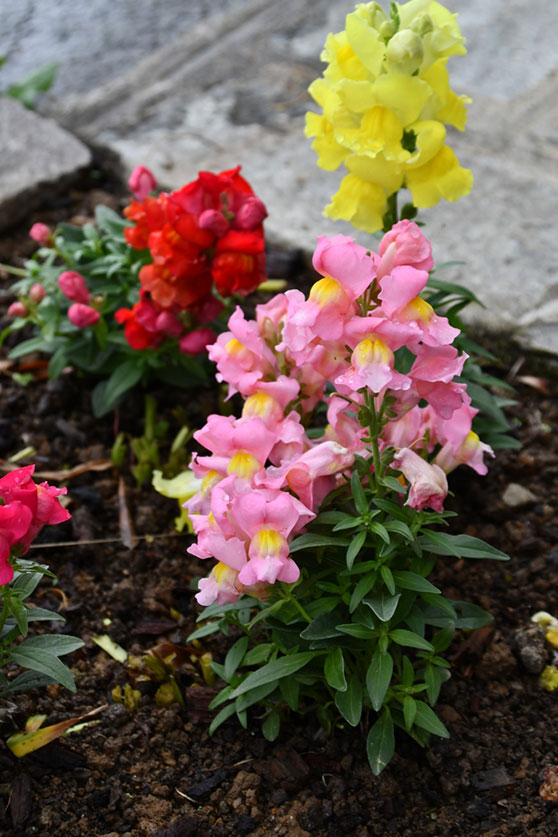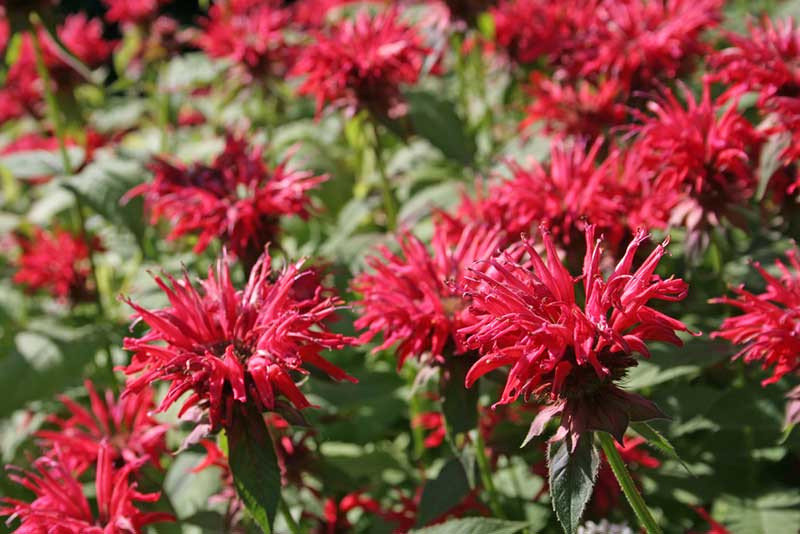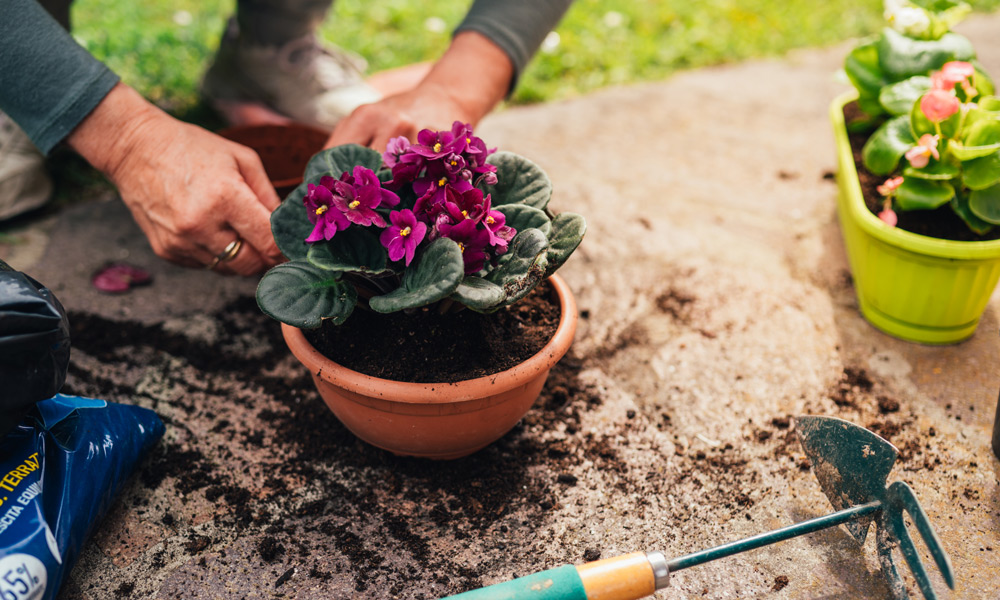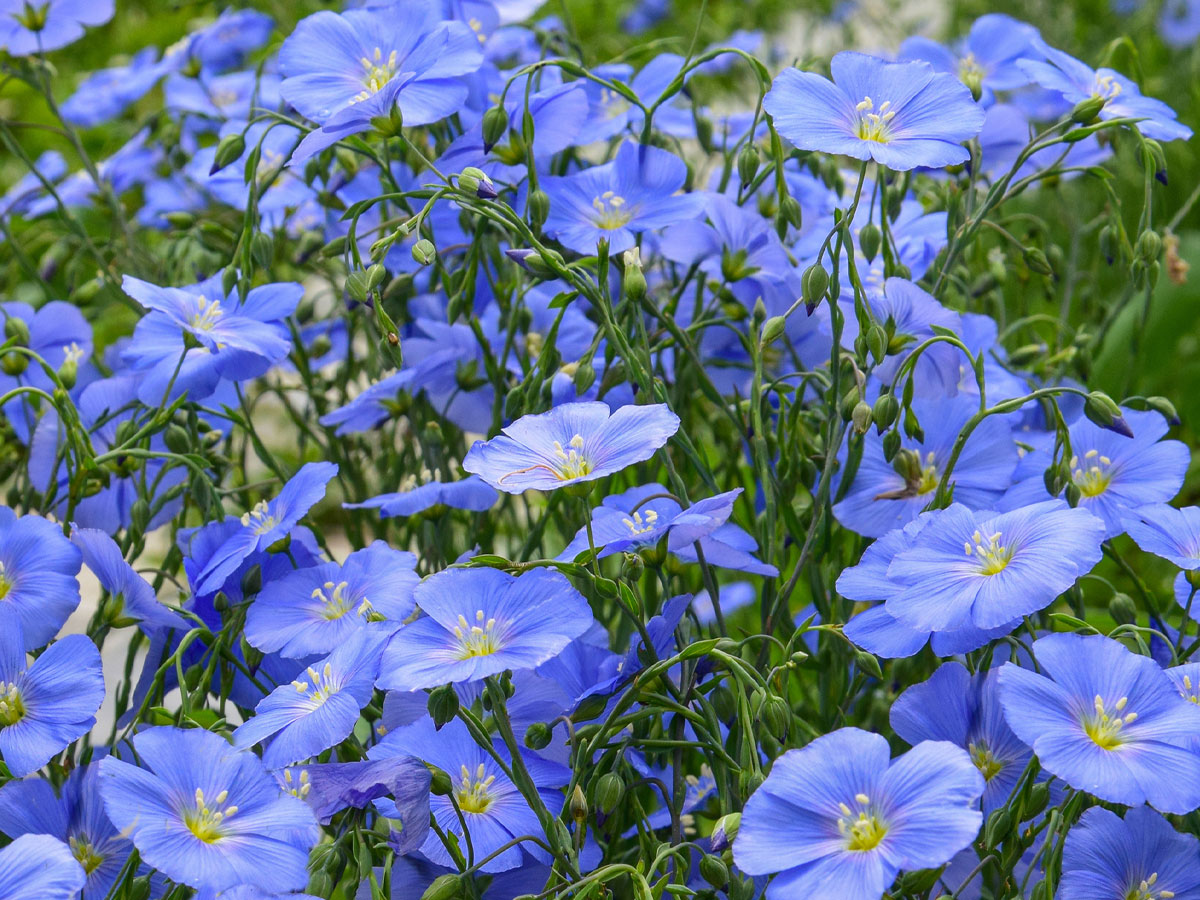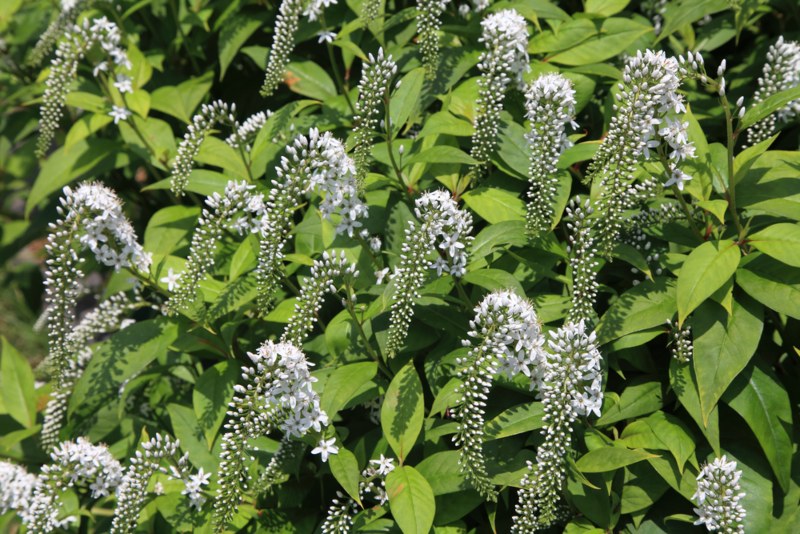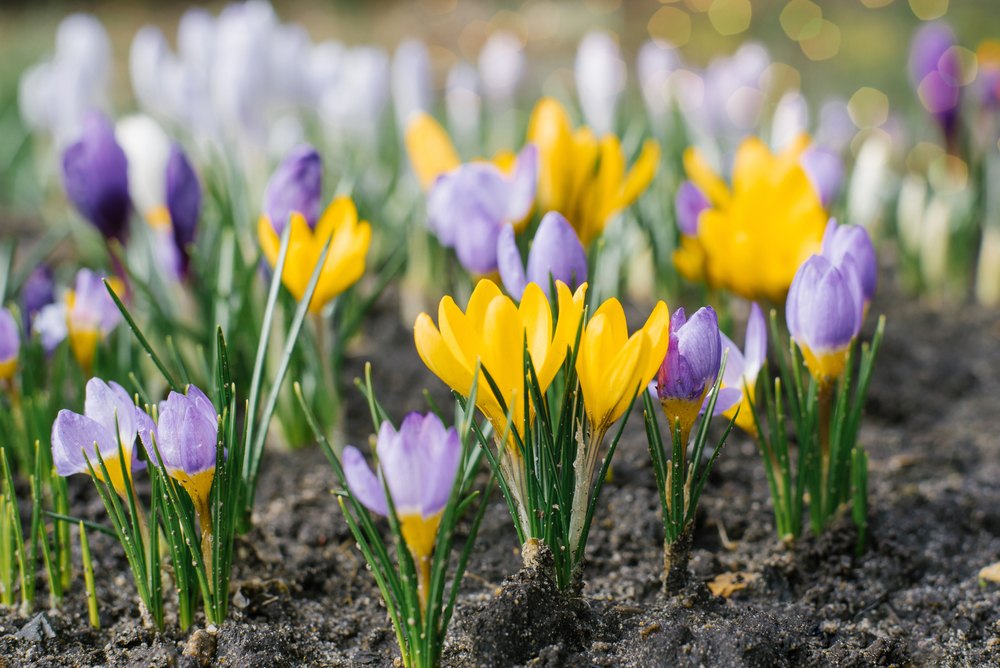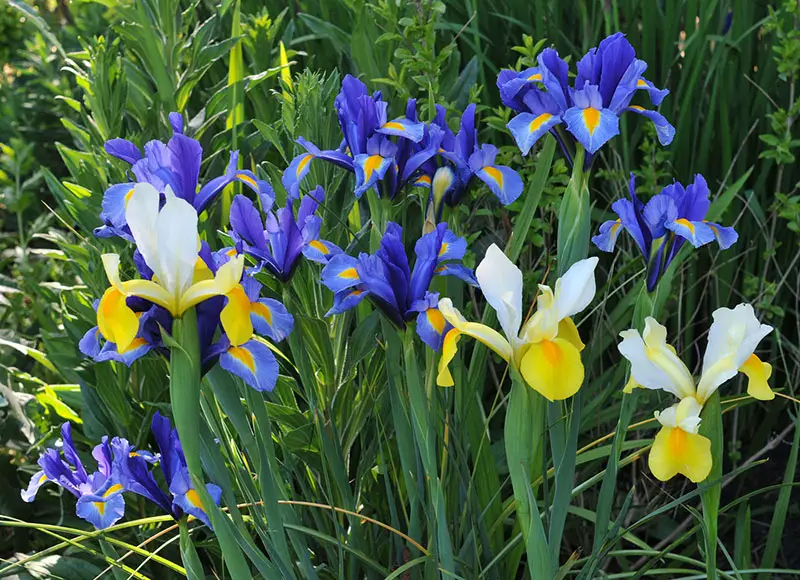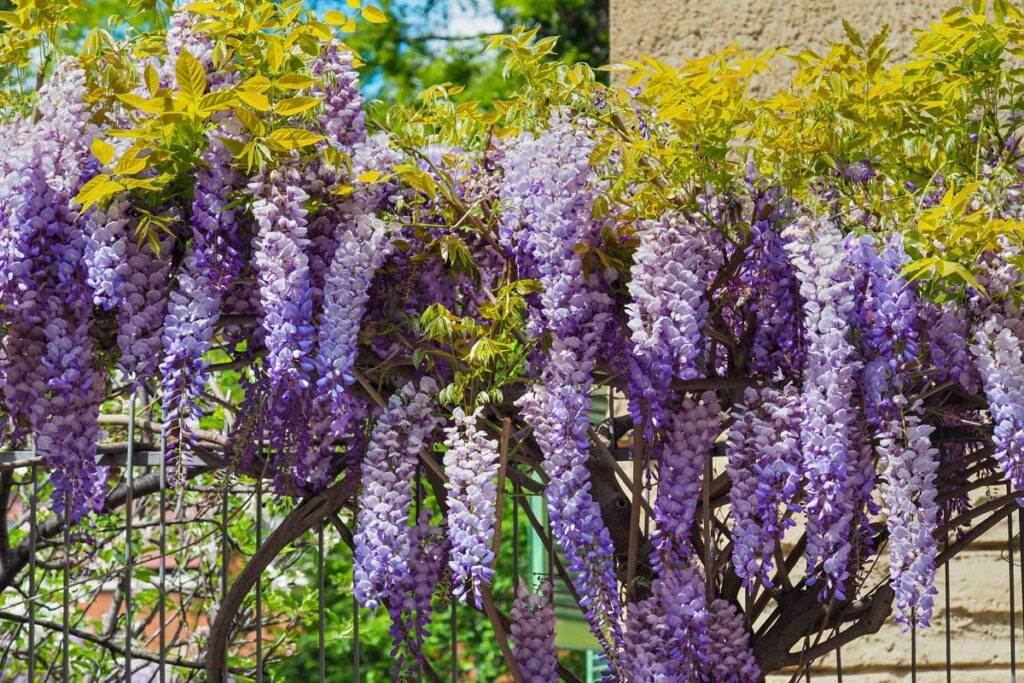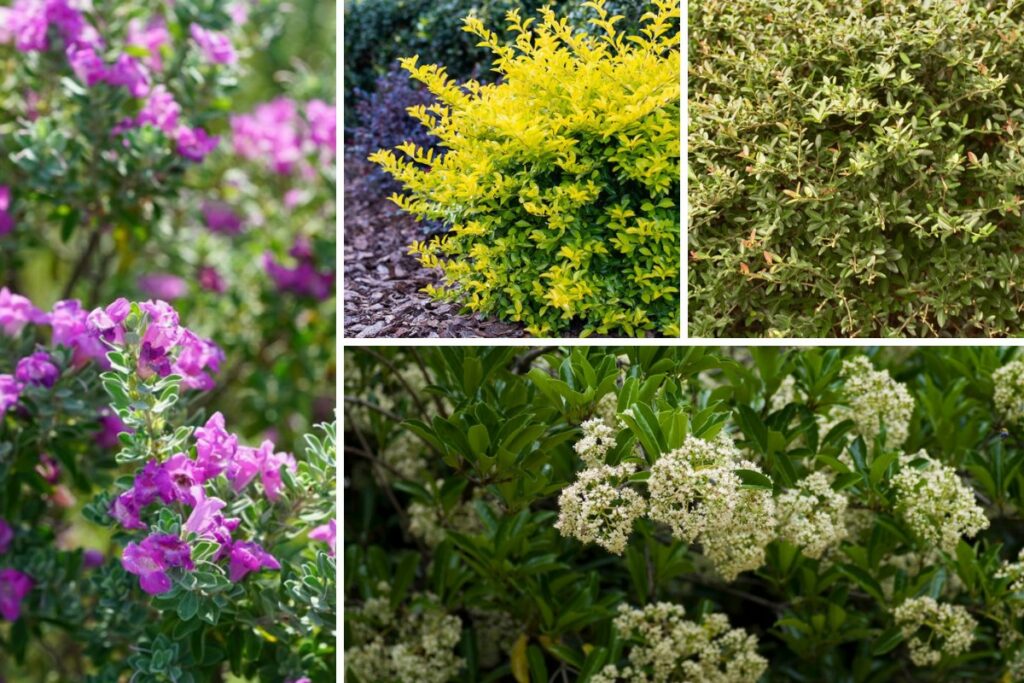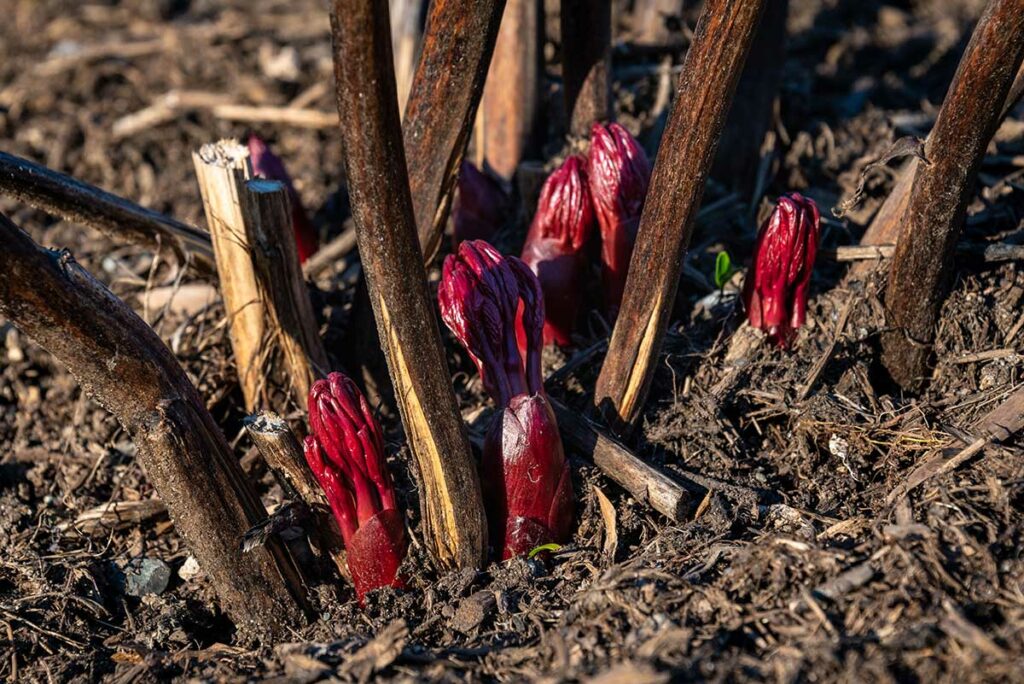
February marks the perfect moment to start preparing your garden for spring. The quiet winter days give you an ideal chance to plan, prune, and get ready for the growing season ahead. Even when it’s cold outside, there are many tasks you can tackle now.
Your main February gardening tasks should focus on the four P’s: propagating, pruning, planting, and preparing. These essential activities will set up your garden for success as warmer weather approaches. Taking care of these jobs now means less stress and better results when spring arrives.
The weather might be chilly, but working in your garden during February can be enjoyable and rewarding. You can start seeds indoors, fix up garden structures, and trim back dormant plants while dreaming of the colorful blooms and tasty harvests to come.
Preparing The Garden
February brings the perfect chance to get your garden ready for spring growth. A clean, well-organized space with healthy soil creates the foundation for a successful growing season.
1. Clean Up Garden Beds
Remove dead plants, fallen leaves, and debris from your garden beds. These materials can harbor pests and diseases that might harm your spring plants.
Use clean, sharp tools to cut back any dead perennial foliage that remains from last season. Keep an eye out for early spring bulbs that might be starting to emerge.
Add the collected plant debris to your compost pile, except for any diseased materials – those should go in the trash.
2. Prune Trees And Shrubs
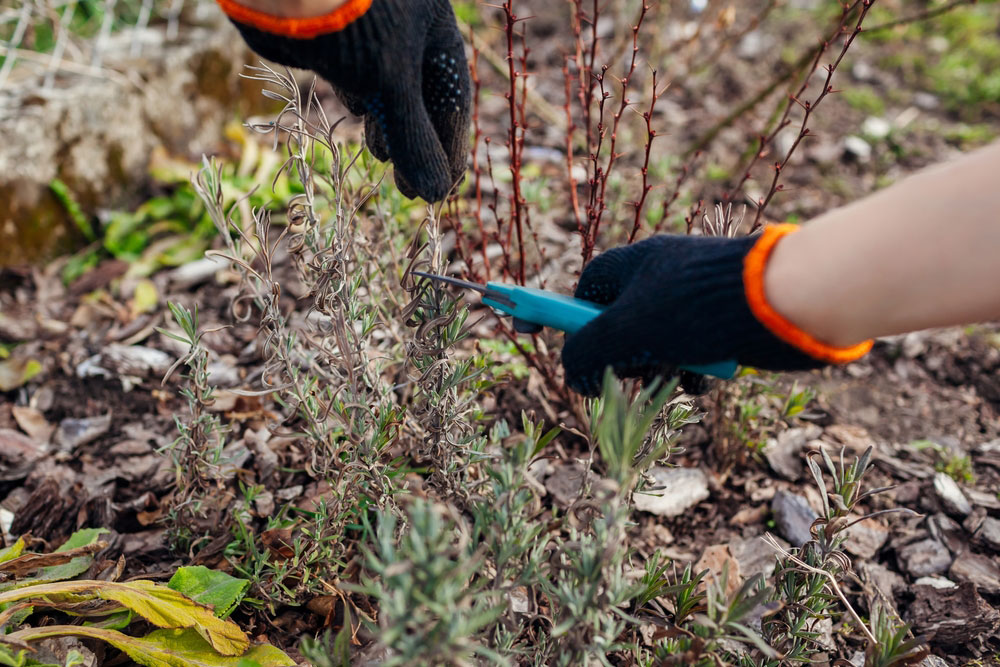
Cut back dead, damaged, or crossing branches on fruit trees while they’re still dormant. This helps shape the tree and promotes better fruit production.
Focus on roses too – remove old, woody stems and trim back to healthy buds pointing outward. This encourages strong spring growth.
Shape flowering shrubs before new growth begins. Make clean cuts at 45-degree angles just above leaf nodes.
3. Test And Amend Soil
Take soil samples from different areas of your garden. Home testing kits work well for basic pH and nutrient levels.
Add organic matter like compost to improve soil structure. Spread a 2-3 inch layer and gently work it into the top few inches of soil.
Consider adding specific amendments based on your soil test results:
- Low pH: Add lime
- High pH: Add sulfur
- Poor drainage: Mix in sand
- Compacted soil: Add peat moss
4. Plan Your Garden Layout
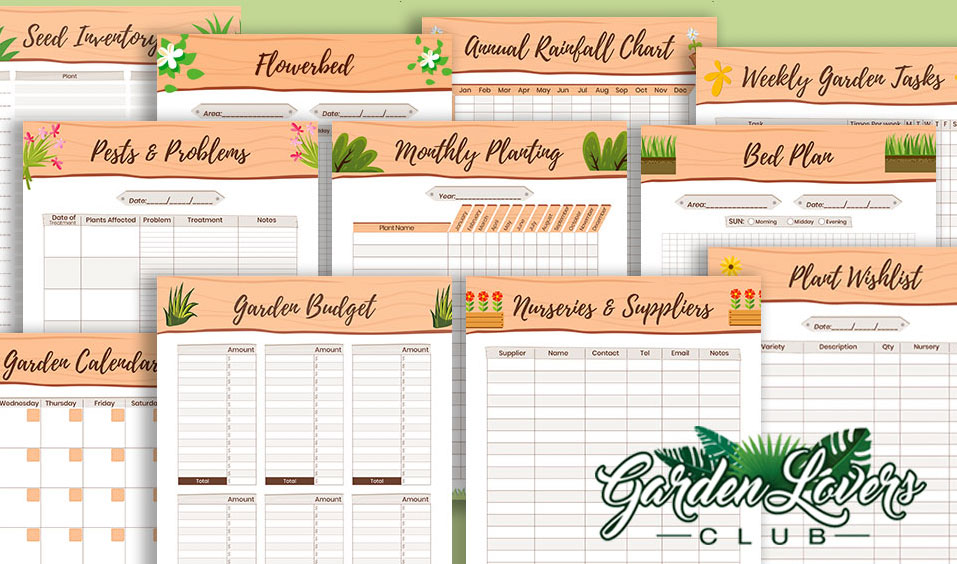
Sketch your garden design on paper. Include measurements and mark sunny versus shady areas.
Make a list of plants you want to grow and their spacing needs. Group plants with similar water and sun requirements together.
Consider companion planting pairs:
- Tomatoes + Basil
- Carrots + Onions
- Beans + Corn
- Cucumbers + Sunflowers
Mark paths and access points for easy maintenance. Leave enough space between rows for comfortable walking and working.
Starting Seeds Indoors
Starting seeds indoors in February gives you a jumpstart on spring planting. You can grow strong, healthy plants while saving money compared to buying seedlings from garden centers.
5. Prepare Seed-Starting Materials
You’ll need clean containers with drainage holes, seed-starting mix, and plant labels. Use cell trays, peat pots, or recycled containers like yogurt cups – just punch holes in the bottom.
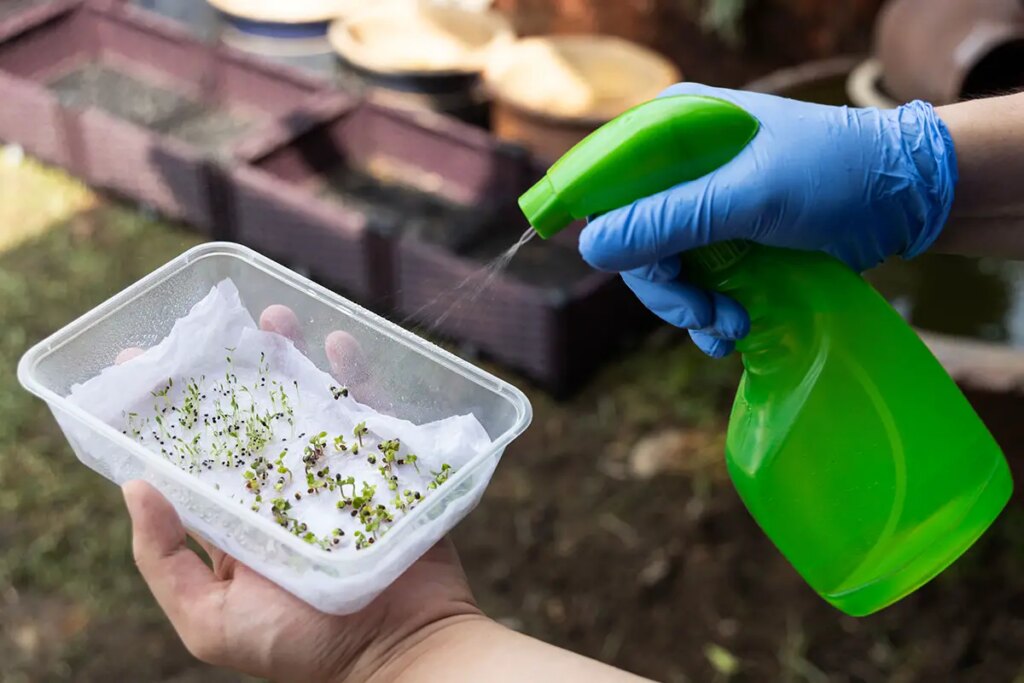
Fill containers with pre-moistened seed starting mix, leaving 1/2 inch at the top. Gently press down to remove air pockets.
Essential supplies:
- Grow lights or sunny windowsill
- Clear plastic dome or plastic wrap
- Water-resistant tray
- Spray bottle
- Heat mat (optional)
6. Sow Warm-Season Vegetables
Popular vegetables to start in February:
- Tomatoes
- Peppers
- Eggplants
- Broccoli
- Cabbage
- Cauliflower
Plant seeds at the depth listed on the packet, usually 1/4 to 1/2 inch deep. Place 2-3 seeds per cell and thin to the strongest seedling later.
Label each variety with the plant name and sowing date.
7. Start Annual Flowers
Many annual flowers benefit from an early indoor start:
- Marigolds
- Zinnias
- Cosmos
- Petunias
- Snapdragons
- Bachelor’s Buttons
Press tiny flower seeds gently into the soil surface without covering them – they need light to germinate.
Mist the soil surface to avoid displacing small seeds.
8. Care For Seedlings
Keep soil consistently moist but not waterlogged. Water from the bottom by filling the tray beneath containers.
Provide 14-16 hours of light daily. Place lights 2-4 inches above seedlings.
Maintain temperatures between 65-75°F.
Run a fan on low to strengthen stems and prevent disease.
Feed seedlings with half-strength liquid fertilizer after their first true leaves appear.
Outdoor Planting
February offers perfect conditions to start planting outdoors, even with cold temperatures. Many plants thrive when planted during this late winter period and will reward you with strong growth come spring.
9. Plant Cool-Season Crops
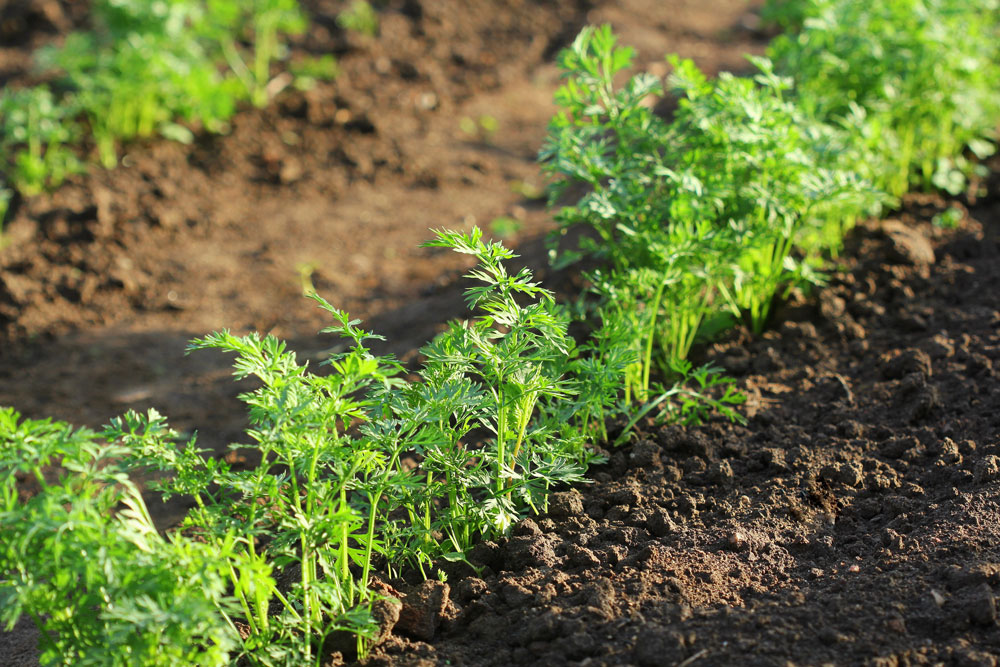
Direct sow peas, spinach, and lettuce in your garden beds now. These hardy vegetables can handle light frosts and actually prefer cooler growing conditions.
Create furrows about 1 inch deep for most cool-season seeds. Space rows 12-18 inches apart to give plants room to grow.
Best cool-season crops for February:
- Carrots
- Radishes
- Kale
- Swiss chard
- Onion sets
- Potatoes
Cover newly planted areas with row covers or cold frames to protect tender seedlings from harsh weather.
10. Sow Hardy Annuals
Start flower seeds that can handle cold temperatures and light frost. These blooms will give your garden early color.
Top hardy annuals for February planting:
- Sweet peas
- Pansies
- Snapdragons
- Calendula
- Larkspur
Plant seeds in prepared beds with well-draining soil. Space them according to package directions and keep soil consistently moist.
11. Plant Bare-Root Trees And Shrubs
Take advantage of dormant season to plant bare-root specimens. The cool, moist conditions help roots establish before spring growth begins.
Dig holes twice as wide as the root system but just as deep. Create a small mound in the center to spread roots over.
Water deeply after planting and add 2-3 inches of mulch around the base. Keep mulch away from direct contact with the trunk or stems.
12. Transplant Perennials
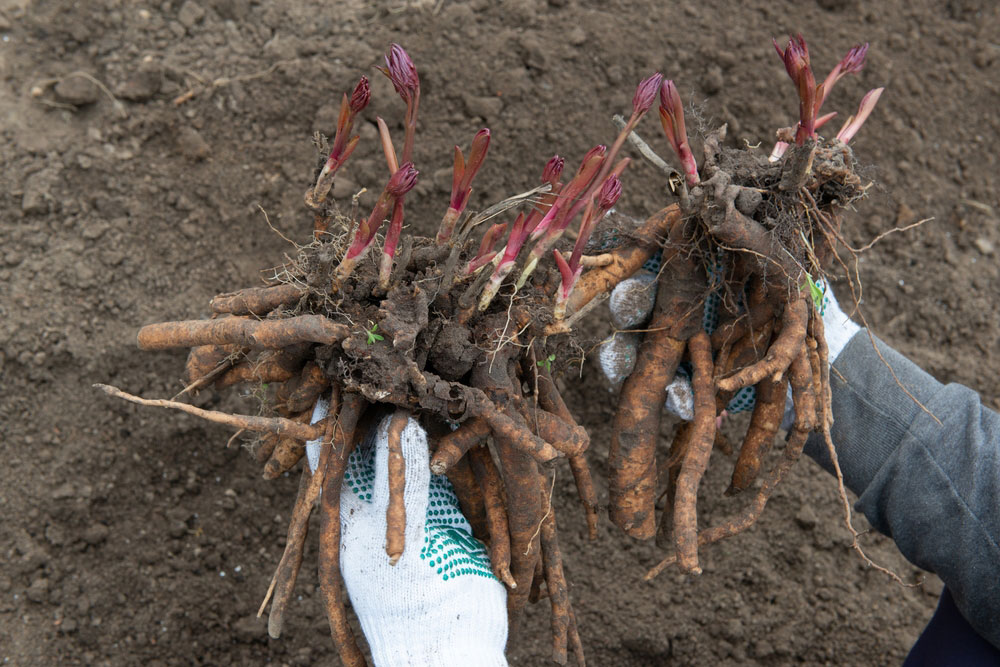
Move or divide existing perennials while they’re still dormant. This gives them time to settle in before active growth starts.
Tips for successful transplanting:
- Water plants thoroughly the day before
- Dig wide and deep to preserve root systems
- Keep soil attached to roots when possible
- Replant immediately at the same depth
Add compost to new planting holes and water well after transplanting. Mark locations with stakes so you don’t forget where you planted them.
Lawn Care
February is the perfect time to get your lawn ready for spring growth. A few simple maintenance tasks now will lead to thick, green grass throughout the growing season.
13. Remove Winter Debris
Start by raking up fallen leaves, twigs, and dead grass that accumulated over winter. This debris can smother your lawn and prevent new growth from emerging when temperatures warm up.
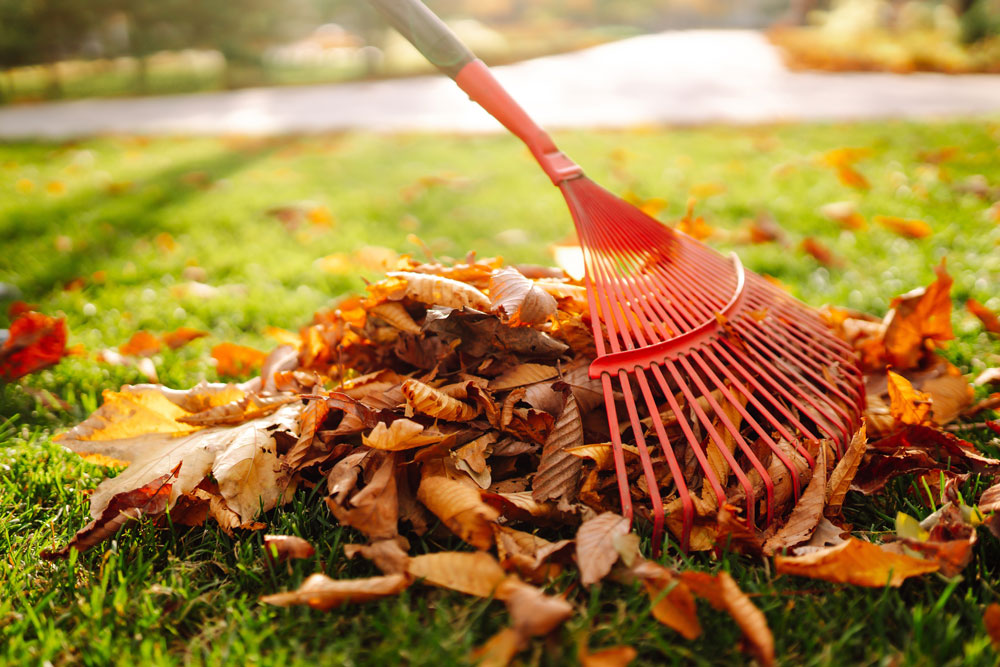
Use a flexible leaf rake to gently remove matted grass and thatch without damaging tender new shoots. Pay extra attention to shaded areas where debris tends to collect.
Make sure to properly dispose of or compost the collected material. Leaving piles of wet debris on your lawn can lead to fungal problems.
14. Overseed Bare Patches
Look for thin or bare spots that developed during winter. These areas need grass seed now to fill in before weeds take over.
First, loosen the soil surface with a metal rake. Spread grass seed that matches your existing lawn type. Cool-season grasses like Kentucky bluegrass and fescue work best for February seeding.
Gently rake the seeds into the soil and keep the area consistently moist until germination. Consider covering with a thin layer of straw to protect seeds from birds.
15. Apply Pre-Emergent Weed Control
Stop weeds before they start by applying pre-emergent herbicide. This creates a barrier that prevents weed seeds from sprouting.
Time your application when soil temperatures reach 50-55°F for several days. Use a broadcast spreader for even coverage across your entire lawn.
Important: Skip this step if you just overseeded, as pre-emergent will also prevent grass seed germination.
16. Sharpen Mower Blades
Clean and sharpen your mower blades now before the first spring cut. Sharp blades make clean cuts that help grass heal quickly and stay healthy.
Remove the blade following your mower’s manual. Use a metal file or grinding wheel to restore the cutting edge. Maintain the original blade angle, usually 30-45 degrees.
Balance the blade after sharpening to prevent mower vibration. A balanced blade will stay level when placed on a nail through its center hole.
Garden Maintenance
February is the perfect time to get your garden infrastructure ready for spring. Good maintenance now will make gardening easier and more enjoyable all season long.
17. Repair Hardscaping
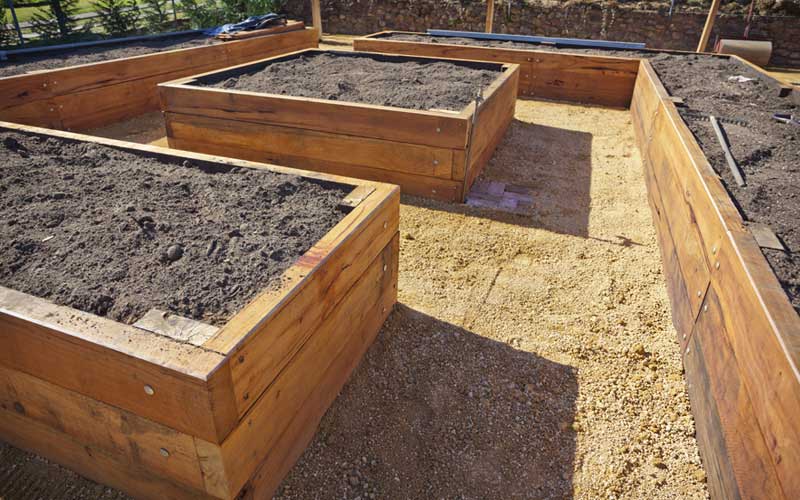
Check your garden paths, fences, and raised beds for any winter damage. Cold temperatures and moisture can create cracks in concrete or loosen fence posts.
Fill cracks in concrete paths with appropriate patching material. Make sure to let patches dry fully before walking on them.
Tighten loose screws and replace rotted boards in wooden structures. A coat of weather-resistant stain or paint will protect them from spring rains.
Level any uneven paving stones that frost heave may have shifted. Add fresh gravel or sand beneath them for better stability.
18. Clean And Maintain Tools
Clean dirt off all your garden tools with a wire brush. Soapy water works well for stubborn mud.
Sharpen pruning shears, hoes, and shovels. A sharp tool makes garden work much easier and safer.
Remove rust spots with steel wool, then apply a light coat of oil to metal parts. This prevents future rusting.
Replace broken handles and repair loose tool heads. Check that moving parts work smoothly.
Store clean tools in a dry place. Hanging them keeps them organized and prevents damage.
19. Set Up Irrigation Systems
Test your watering system for leaks or damage. Replace any cracked hoses or broken sprinkler heads.
Clean irrigation filters and flush out pipes to remove mineral buildup. This helps water flow evenly.
Check that timers work correctly and adjust watering schedules for spring needs. Different plants need different amounts of water.
Install drip lines for new garden beds now, before plants go in. This saves time later.
Consider adding a rain barrel to collect water. Place it near your garden for easy access.
20. Apply Mulch
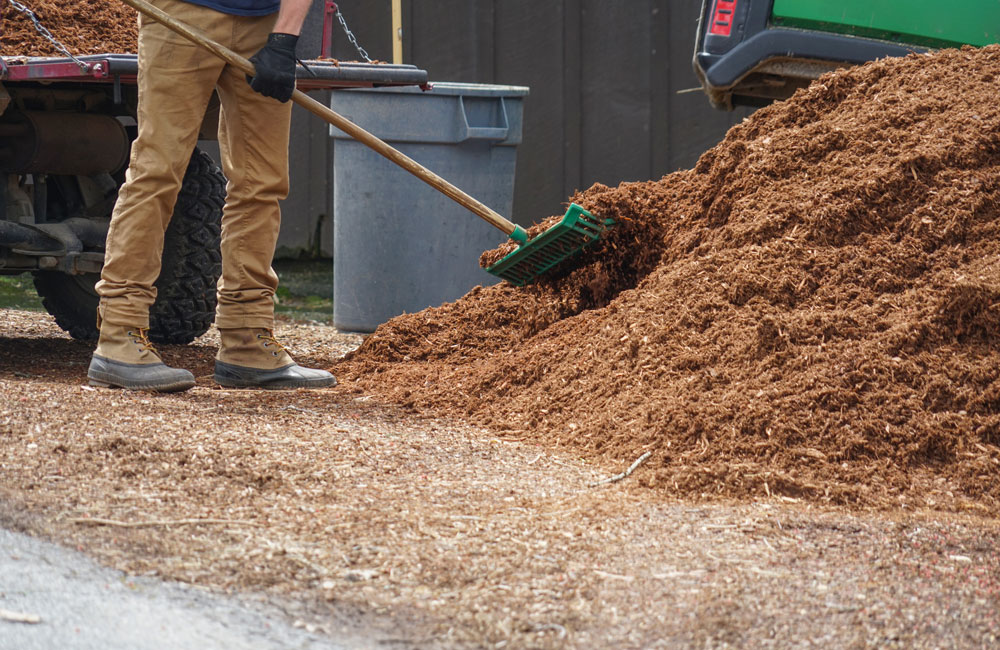
Add 2-3 inches of fresh mulch around perennial plants and trees. Keep mulch away from plant stems to prevent rot.
Choose organic materials like:
- Bark chips
- Straw
- Leaves
- Pine needles
Benefits of proper mulching:
- Keeps soil temperature steady
- Reduces water loss
- Blocks weed growth
- Improves soil as it breaks down
Remove old, matted mulch first. This prevents fungal growth and lets new mulch work better.
Pest And Disease Prevention
Taking preventive steps against pests and diseases in February saves a lot of headaches later in the growing season. A few simple actions now can protect your plants from common issues that emerge in spring.
21. Inspect Plants For Overwintering Pests
Grab a magnifying glass and examine your plants closely. Look under leaves, along stems, and in branch crotches for signs of scale insects, mealybugs, or spider mite eggs.
Pay special attention to houseplants since indoor pests thrive in winter conditions. Check the soil surface and pot edges for fungus gnats or their larvae.
If you spot problems, remove affected parts by hand or use insecticidal soap on warmer days above 40°F (4°C).
22. Apply Dormant Oil Sprays
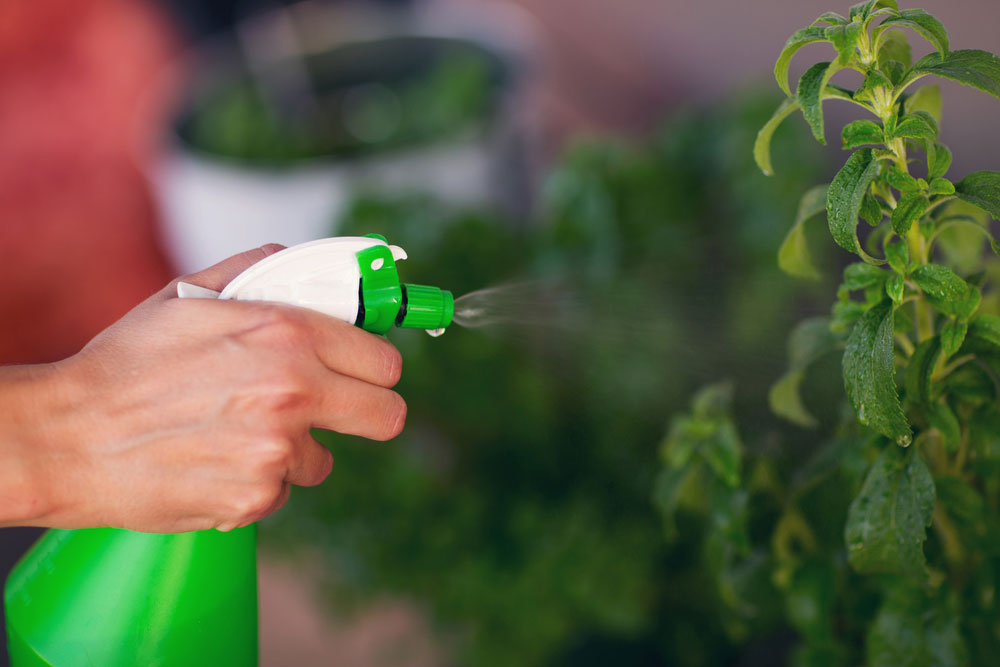
Dormant oils work best on dry, calm days when temperatures stay above 40°F (4°C) for at least 24 hours. These oils smother overwintering insects and their eggs.
Target fruit trees, roses, and shrubs that had pest problems last year. Mix and apply according to label instructions.
Avoid spraying when rain is forecast within 24 hours. Cover all plant surfaces thoroughly but avoid dripping.
23. Remove Diseased Plant Material
Clean up fallen leaves and dead plant material that can harbor disease spores. Look for black spots, powdery mildew residue, or cankers on branches.
Prune out any branches showing signs of disease. Make clean cuts at 45-degree angles just above healthy buds.
Pro tip: Clean your pruning tools with rubbing alcohol between cuts to prevent spreading diseases between plants.
Use paper bags instead of plastic to collect diseased material. Don’t add infected plant parts to your compost pile.
Preparing For Spring Blooms
February is the perfect time to get your garden ready for a spectacular spring display. A few key tasks now will reward you with vibrant flowers and healthy plants throughout the growing season.
24. Force Spring-Flowering Bulbs
Bring spring indoors early by forcing bulbs like tulips, daffodils, and hyacinths. Choose pre-chilled bulbs or ones you’ve stored in your refrigerator for 12-14 weeks.
Fill containers with well-draining potting mix, leaving the bulb tips slightly exposed. Place them in a cool spot around 60°F with indirect light.
Water the bulbs lightly, keeping soil just moist but not wet. Move containers to a warmer, brighter location once shoots appear.
Expect blooms in 2-3 weeks after forcing. Tip: Stagger your plantings every 2 weeks for continuous indoor flowers.
25. Divide And Replant Perennials
Look for signs of crowded perennial clumps that need splitting. Focus on plants like daylilies, hostas, and black-eyed susans that have outgrown their space.
Use a clean, sharp spade to dig up the entire plant. Gently pull apart the root ball into smaller sections, each with healthy roots and shoots.
Replant divisions immediately in prepared soil enriched with compost. Space them according to mature plant size.
Keep newly divided plants well-watered until established. Add a 2-inch layer of mulch around them.
26. Cut Back Ornamental Grasses
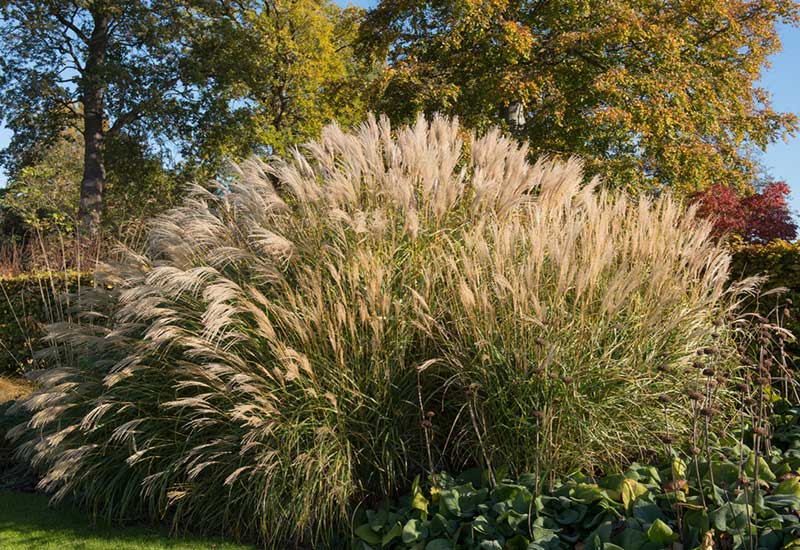
Remove dead foliage from ornamental grasses before new growth emerges. Cut warm-season grasses like miscanthus and switchgrass to 4-6 inches above ground.
Use sharp, clean shears or hedge trimmers for a clean cut. Bundle the grass stalks with twine to make cutting and cleanup easier.
Leave cool-season grasses like fescue and sedge mostly intact, just removing brown tips and damaged foliage.
Add cut grass material to your compost pile or use it as mulch in other garden areas.
Conclusion
February gives you a perfect chance to get your garden ready for spring. These tasks will set you up for success in the growing season ahead.
Clean and organize your tools now. A tidy workspace makes gardening more fun and efficient when warmer weather arrives.
Take time to plan your garden layout and order any seeds you need. Many popular varieties sell out fast as spring approaches.
Remember that proper pruning and soil preparation this month will reward you with healthier, more productive plants later. Your future self will thank you for putting in the work now.
Don’t feel overwhelmed by all these February tasks. Even completing just a few key jobs will give your garden a great head start. Focus on what matters most for your specific garden goals.
Stay warm while working outside! Dress in layers and take breaks when needed. Garden prep can wait for nicer weather days.
Your efforts this month create the foundation for beautiful blooms and bountiful harvests. Get excited – spring is just around the corner!

